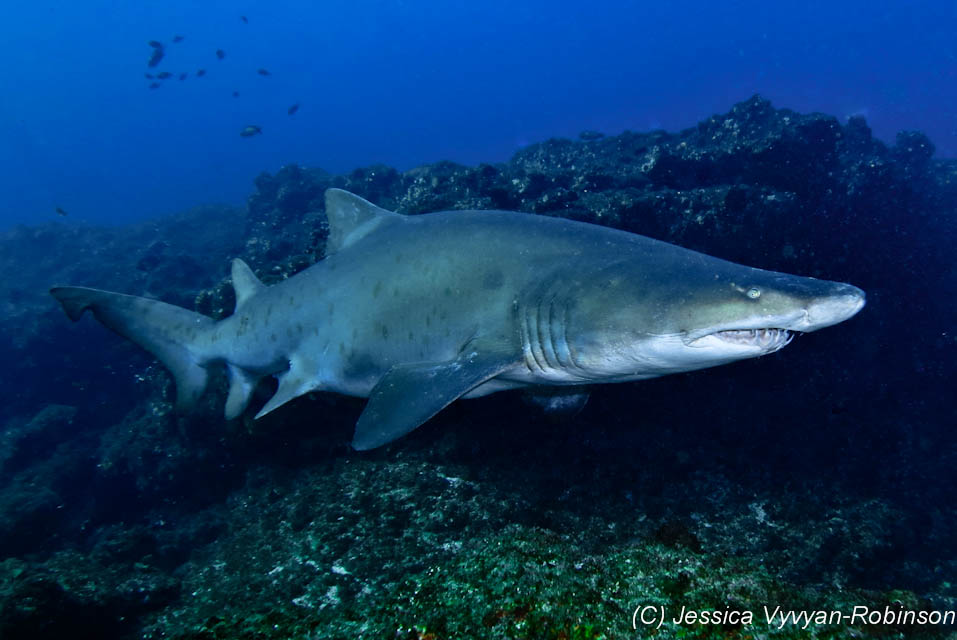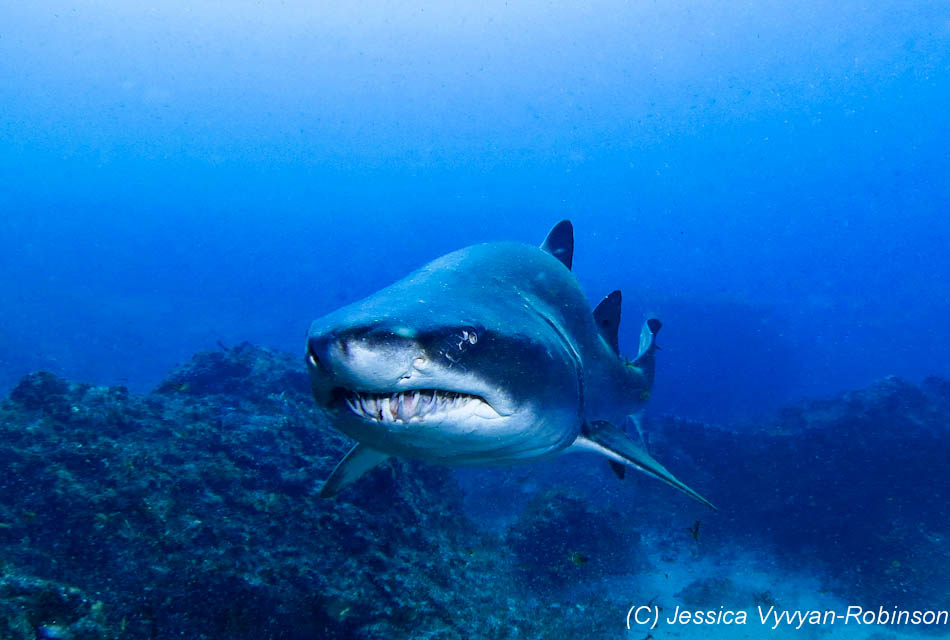Sandtiger sharks are an aquarium favorite thanks to their ferocious appearance; with rows of crooked teeth and eyes of glinting gold, they certainly fulfill our expectations of the ocean’s most famous apex predator. Also known variously as ragged-tooth or grey nurse sharks, these animals are even more impressive in their natural environment, and those that have gone scuba diving in South Africa, Australia or the eastern coast of the United States may have been lucky enough to encounter them in the wild. Despite their fearsome façade, sandtigers are rarely aggressive towards humans, and can be seen in aggregations numbering tens of individuals during mating season. They are fascinating animals, with several strange characteristics that combine to make them a truly unique species.
The most famous of these characteristics is connected with the sandtiger’s method of reproduction. The female sandtiger has two uteri, which after impregnation may each contain as many as fifty embryonic babies. In a phenomenon known as intrauterine cannibalism, the first of these embryos to reach a certain size (usually around 10 centimeters) consumes all of its smaller siblings. After all of the other embryos have been eaten, the remaining baby shark in each embryo subsists on unfertilized eggs for the duration of its eight to twelve month gestation period. As a result of intrauterine cannibalism, the female sand-tiger will only ever give birth to two pups- one from each uterus. Thanks to its robust diet, the baby sandtigers emerge from the womb fully developed- at approximately 1 meter in length, they are immediately capable of fending for themselves against possible predators.
Known as embryophagy, this form of intrauterine cannibalism only occurs in sandtiger sharks. Although the embryos of other shark species consume unfertilized eggs in the womb in a process called oophagy, sandtigers are the only species in which embryos prey on other embryos. According to legend, the phenomenon was discovered by a researcher in 1948, who was bitten on the hand whilst probing the uterus of a pregnant sandtiger. Despite the fact that the perpetrator was yet to be born at the time, this incident was later recorded in shark attack records for that year. Researchers have several theories as to why sandtigers reproduce in this unique and slightly grisly way, the first of which relates to the large size of the surviving pup at birth. Sandtigers only reproduce once every two to three years, and with just two pups born each time they have one of the slowest rates of reproduction of all shark species.
As a result, it is imperative that both pups survive to reach sexual maturity if sandtiger populations are to be maintained. Whereas most shark species produce multiple young in the hope that probability will allow at least a few to make it to adulthood, the sandtiger chooses instead to produce babies that are already strong enough to cope with life in the ocean. Their unusual diet prior to their birth is undoubtedly the source of their unparalleled size and development. Other scientists theorize that intrauterine cannibalism is a struggle for paternity within the womb, due to the fact that female sandtigers mate with several males each breeding season. This habit results in embryos with different fathers, and experts hypothesize that intrauterine cannibalism is a mechanism for ensuring that the offspring of only one male survive. In a series of tests conducted on sandtiger embryos in various stages of development, researchers found that in the overwhelming majority of cases, the final two pups were full siblings.
Whatever the reason, the next time you come face to face with a sandtiger (whether it’s in an aquarium or in open ocean), remember to treat it with respect. After all, this is an animal that has been fighting for survival since before it was born.











